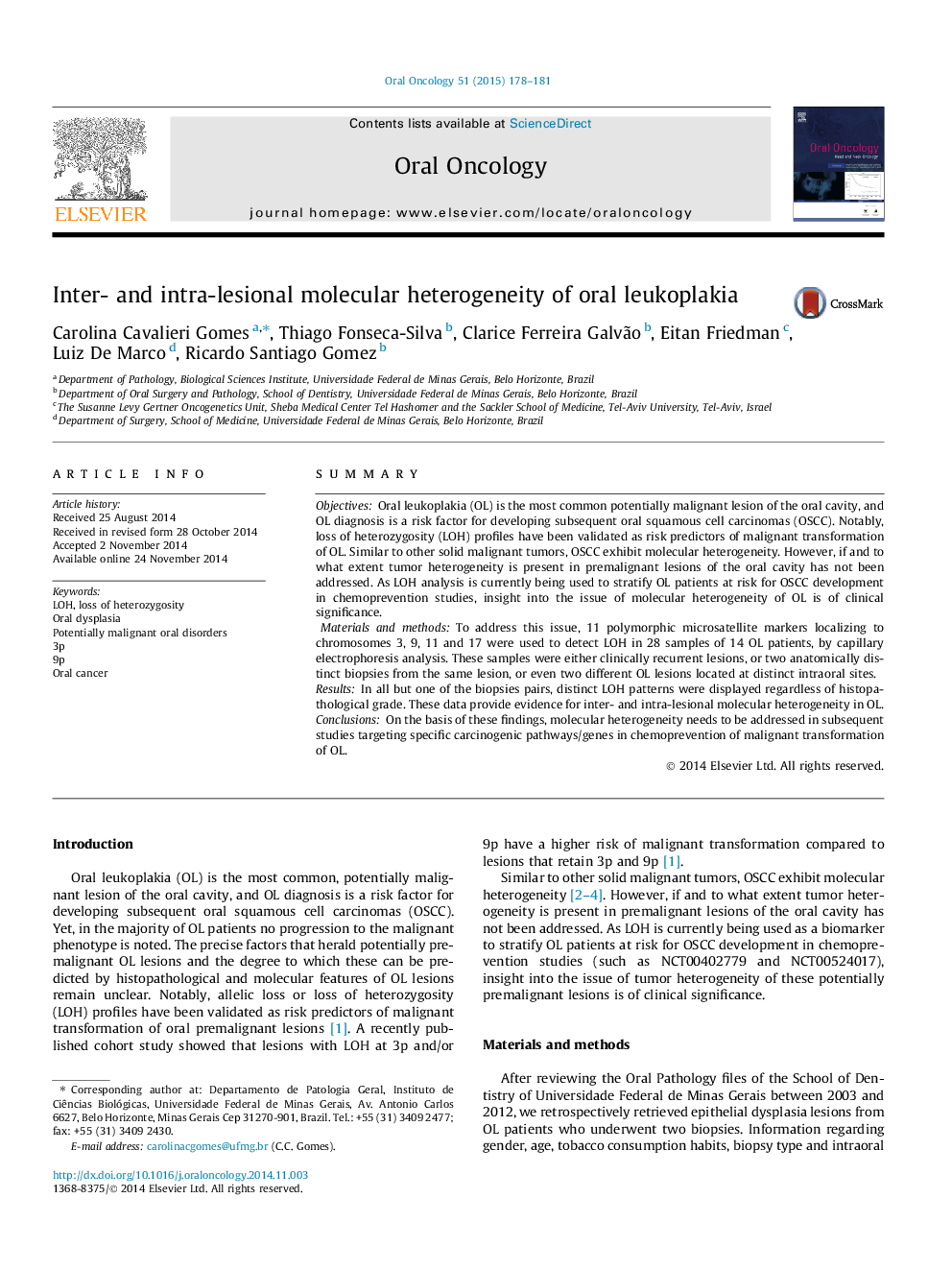| Article ID | Journal | Published Year | Pages | File Type |
|---|---|---|---|---|
| 6054874 | Oral Oncology | 2015 | 4 Pages |
SummaryObjectivesOral leukoplakia (OL) is the most common potentially malignant lesion of the oral cavity, and OL diagnosis is a risk factor for developing subsequent oral squamous cell carcinomas (OSCC). Notably, loss of heterozygosity (LOH) profiles have been validated as risk predictors of malignant transformation of OL. Similar to other solid malignant tumors, OSCC exhibit molecular heterogeneity. However, if and to what extent tumor heterogeneity is present in premalignant lesions of the oral cavity has not been addressed. As LOH analysis is currently being used to stratify OL patients at risk for OSCC development in chemoprevention studies, insight into the issue of molecular heterogeneity of OL is of clinical significance.Materials and methodsTo address this issue, 11 polymorphic microsatellite markers localizing to chromosomes 3, 9, 11 and 17 were used to detect LOH in 28 samples of 14 OL patients, by capillary electrophoresis analysis. These samples were either clinically recurrent lesions, or two anatomically distinct biopsies from the same lesion, or even two different OL lesions located at distinct intraoral sites.ResultsIn all but one of the biopsies pairs, distinct LOH patterns were displayed regardless of histopathological grade. These data provide evidence for inter- and intra-lesional molecular heterogeneity in OL.ConclusionsOn the basis of these findings, molecular heterogeneity needs to be addressed in subsequent studies targeting specific carcinogenic pathways/genes in chemoprevention of malignant transformation of OL.
